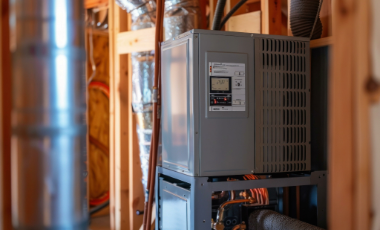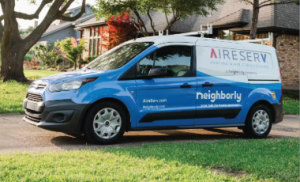Introduction to Sustainable HVAC Solutions
In today’s world, where climate change and environmental degradation are pressing concerns, it is crucial to adopt sustainable practices in every aspect of our lives. One area that holds immense potential for reducing our carbon footprint is the heating, ventilation, and air conditioning (HVAC) industry. Sustainable HVAC solutions offer a greener future by minimizing energy consumption, reducing greenhouse gas emissions, and promoting a healthier indoor environment. In this article, we will explore the benefits of green HVAC systems, the key features of sustainable HVAC technologies, and how to implement these solutions in buildings.
Benefits of Green HVAC Systems
Green HVAC systems offer a multitude of benefits, both for the environment and for building occupants. One of the primary advantages is energy efficiency. According to the U.S. Department of Energy, HVAC systems account for nearly half of a building’s energy consumption. By implementing sustainable HVAC solutions, such as high-efficiency equipment and smart controls, energy usage can be significantly reduced. This not only lowers utility bills but also decreases the demand for fossil fuels, leading to a substantial reduction in greenhouse gas emissions.
Moreover, green HVAC systems contribute to improved indoor air quality. Traditional HVAC systems often circulate pollutants and allergens, leading to health issues such as respiratory problems and allergies. Sustainable HVAC technologies, such as advanced filtration systems and ventilation strategies, help remove contaminants from the air, ensuring a healthier indoor environment. This is particularly important considering that people spend approximately 90% of their time indoors, as reported by the Environmental Protection Agency.
Another benefit of green HVAC systems is their long-term cost savings. While the initial investment in sustainable technologies may be higher, the operational and maintenance costs are significantly lower compared to conventional systems. For instance, energy-efficient HVAC equipment requires less maintenance and has a longer lifespan, resulting in reduced repair and replacement expenses. Additionally, some governments and utility companies offer incentives and rebates for installing sustainable HVAC systems, further offsetting the initial costs.
Key Features of Sustainable HVAC Technologies
Sustainable HVAC technologies encompass a range of innovative features that contribute to energy efficiency and environmental sustainability. One key feature is the use of renewable energy sources. Integrating solar panels or geothermal systems into HVAC systems allows buildings to generate their own clean energy, reducing reliance on fossil fuels. This not only lowers carbon emissions but also provides long-term energy cost savings.
Another important feature is smart controls and automation. By utilizing sensors, advanced algorithms, and machine learning, HVAC systems can optimize energy usage based on real-time data. For example, smart thermostats can adjust temperature settings based on occupancy patterns, ensuring comfort while minimizing energy waste. Additionally, automated controls can optimize ventilation rates, reducing the need for mechanical cooling or heating.
Implementing Sustainable HVAC Solutions in Buildings
To implement sustainable HVAC solutions in buildings, several steps can be taken. Firstly, conducting an energy audit is essential to identify areas of improvement and determine the most suitable technologies. This involves analyzing energy consumption patterns, assessing insulation levels, and evaluating the efficiency of existing HVAC equipment.
Next, upgrading to energy-efficient HVAC equipment is crucial. This includes installing high-efficiency furnaces, air conditioners, and heat pumps that meet or exceed industry standards. Additionally, integrating advanced filtration systems, such as HEPA filters, can significantly improve indoor air quality.
Furthermore, optimizing building design and layout can enhance the effectiveness of sustainable HVAC systems. Incorporating natural ventilation strategies, such as operable windows and skylights, can reduce the reliance on mechanical cooling or heating. Additionally, utilizing building materials with high thermal insulation properties can minimize heat transfer, reducing the need for excessive heating or cooling.
Lastly, ongoing maintenance and regular system inspections are vital to ensure the continued efficiency and effectiveness of sustainable HVAC solutions. This includes cleaning and replacing filters, checking for leaks or ductwork issues, and calibrating controls for optimal performance.
In conclusion, sustainable HVAC solutions offer a greener future by reducing energy consumption, lowering greenhouse gas emissions, and promoting a healthier indoor environment. The benefits of green HVAC systems include energy efficiency, improved indoor air quality, and long-term cost savings. Key features of sustainable HVAC technologies include the use of renewable energy sources and smart controls. Implementing sustainable HVAC solutions in buildings involves conducting energy audits, upgrading to energy-efficient equipment, optimizing building design, and ensuring ongoing maintenance. By embracing sustainable HVAC practices, we can contribute to a more sustainable and environmentally friendly future.


